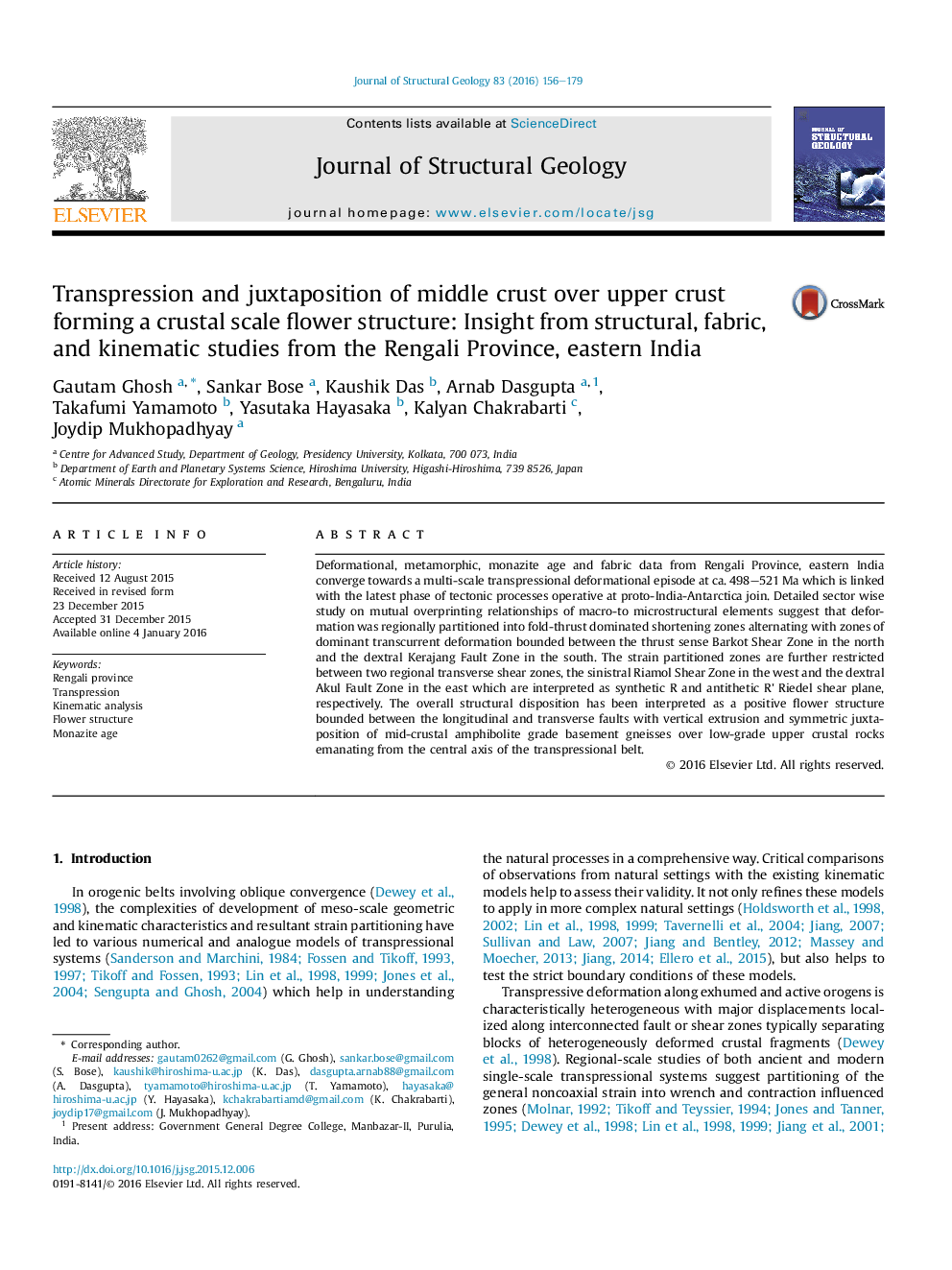| Article ID | Journal | Published Year | Pages | File Type |
|---|---|---|---|---|
| 4732976 | Journal of Structural Geology | 2016 | 24 Pages |
•Deformation, metamorphic and fabric analyses in the Rengali province reveal a transpressional episode at ca. 498–521 Ma.•Deformation was partitioned into fold-thrust zones alternating with zones of dominant transcurrent slip.•The Central gneissic belt forms a medial strike-slip zone flanked by two oppositely verging fold-thrust zones.•The overall structural disposition shows a positive flower structure.•The Akul fault zone and the Riamol shear zone are interpreted as R and R′ Riedel shear planes.
Deformational, metamorphic, monazite age and fabric data from Rengali Province, eastern India converge towards a multi-scale transpressional deformational episode at ca. 498–521 Ma which is linked with the latest phase of tectonic processes operative at proto-India-Antarctica join. Detailed sector wise study on mutual overprinting relationships of macro-to microstructural elements suggest that deformation was regionally partitioned into fold-thrust dominated shortening zones alternating with zones of dominant transcurrent deformation bounded between the thrust sense Barkot Shear Zone in the north and the dextral Kerajang Fault Zone in the south. The strain partitioned zones are further restricted between two regional transverse shear zones, the sinistral Riamol Shear Zone in the west and the dextral Akul Fault Zone in the east which are interpreted as synthetic R and antithetic R' Riedel shear plane, respectively. The overall structural disposition has been interpreted as a positive flower structure bounded between the longitudinal and transverse faults with vertical extrusion and symmetric juxtaposition of mid-crustal amphibolite grade basement gneisses over low-grade upper crustal rocks emanating from the central axis of the transpressional belt.
